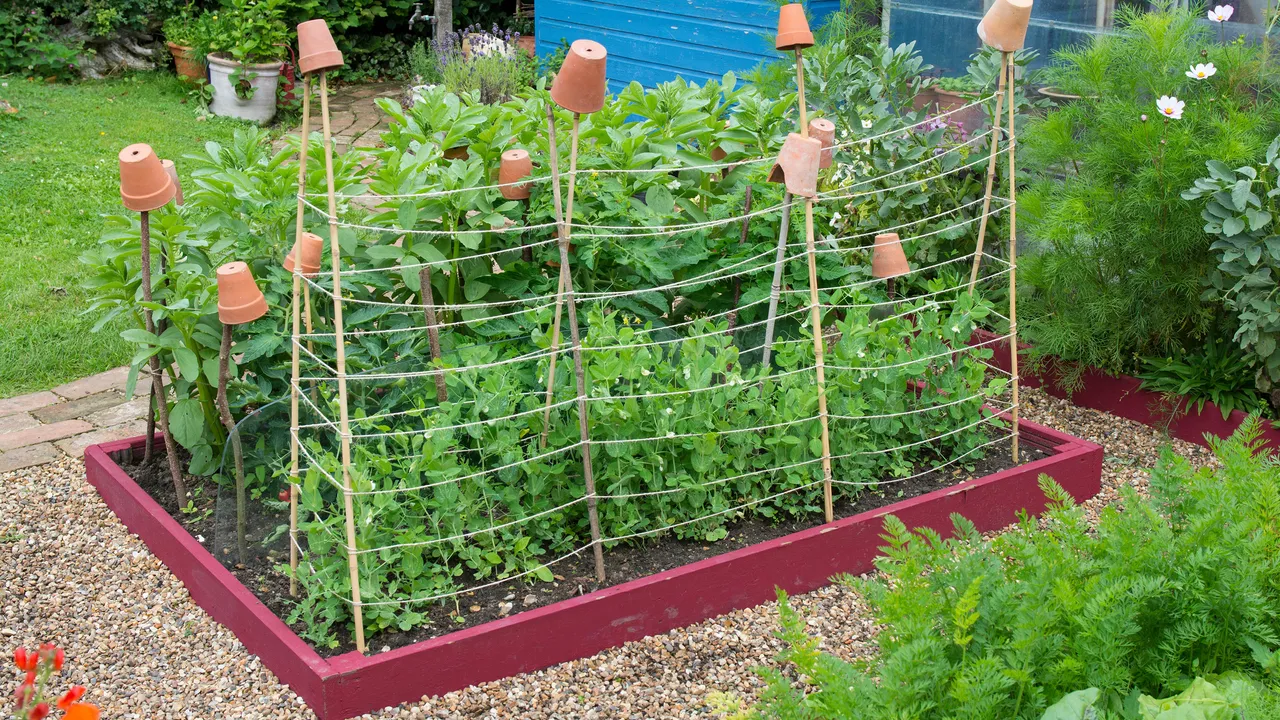Raised garden beds allow you to grow flowers, vegetables, herbs and other plants while controlling the soil quality and drainage. They elevate your garden for easier access and prevent weeds.
Painting or staining raised beds can help protect the wood, make them last longer, and allow you to match your color scheme. But not all paints are safe for use around plants.
In this article, we’ll look at:
- Benefits of painting raised beds
- What paints to avoid
- Choosing safe, non-toxic paint
- Application tips
- Alternative materials for raised beds
Let’s get into how to pick the right paint for your raised garden beds!
Benefits of Painting Raised Beds
Here are some of the reasons you may want to paint your raised garden beds:
- Protects wood – Paint or stain shields wooden beds from rot, moisture damage, UV rays and pests. This extends their lifespan.
- Adds color – Paint allows you to incorporate raised beds into your color scheme. Bright colors can make them stand out as a focal point.
- Uniform look – Painting raised beds the same color as your fence or other structures gives a cohesive look.
- Prevent weathering – Paint helps slow down the weathering process on wooden raised beds. This maintains their appearance.
- Hide flaws – Paint or stain can mask imperfections, cracks, or flaws in the wood of older raised beds.
Paints to Avoid for Raised Beds
It’s crucial to avoid certain paints and treatments on or near raised garden beds:
- Lead paint – Old lead-based paints are highly toxic and should never be used around plants and food crops.
- Paint with VOCs – Many standard paints contain VOCs that can leach into soil. Avoid these.
- Treated lumber stain – Wood preservatives and stains with pesticides/fungicides should not be used.
- Oil-based paints – The petroleum distillates in oil-based paints can harm plants.
When choosing paints, confirm they are non-toxic, VOC-free, and labeled as food/plant safe. Read labels closely to avoid hazardous ingredients.
Best Paint Options for Raised Beds
Here are some good plant and food-safe paint options to consider:
- Latex paint – Water-based exterior latex paint is non-toxic when dry. Look for zero-VOC options.
- Milk paint – Traditional milk-based paints are safe, natural options for raised beds.
- Food-safe stains – Products like Doctor Woodworker’s Butcher Block Oil are non-toxic.
- Natural oils – Food grade linseed oil and tung oil naturally treat and protect wood.
- Eco-friendly brands – Companies like Earthpaint or BioShield offer plant-safe paints.
Stick to paints specifically marketed as food-safe, non-toxic, and eco-friendly to ensure safety around your edible and ornamental plants.
How to Apply Paint to Raised Beds
Follow these tips when applying paint:
- Only paint the exterior of beds used for edibles to be extra safe.
- Use a paintbrush for smoother, more even coverage compared to a roller.
- Wear gloves and goggles to protect yourself while painting.
- Read label instructions carefully and follow any special directions.
- Allow ample drying time before planting as advised on the paint product.
- Mix in sand for better wood adhesion if indicated.
Take time to properly prepare the surface, apply in ideal conditions allow thorough drying, and follow all product safety precautions when painting your raised beds.
Consider Lining Beds Before Painting
For extra protection, you can line your raised garden beds with landscape fabric or plastic sheeting before painting:
- This creates a protective barrier between paint and soil.
- It’s recommended if you must paint the interior for restoration or other reasons.
- Landscape fabric also helps prevent weed growth from below.
Lining is an optional extra step that prevents any potentially leached chemicals from impacting your plants’ health.
Alternative Materials for Unpainted Raised Beds
If you prefer to avoid paint entirely, here are some other great options:
- Cedar or redwood – These woods naturally resist rot with no treatment needed.
- Stone or brick – Masonry materials won’t degrade or leach chemicals.
- Vinyl – Recycled vinyl lumber avoids any paint or stain concerns.
- Galvanized metal – Powder coated metal is very durable and usually paint-free.
Choose untreated, non-leaching materials like stone brick or naturally rot-resistant woods to sidestep paint safety concerns.
Protect Your Plants with Safe Painting Practices
Raised garden beds lend themselves perfectly to adding a splash of color in your yard through paint But care is required in selecting and applying paints near plants.
Stick to non-toxic, plant-safe paints and stains if you do opt to paint your raised beds. Avoid old lead-based paints and treated wood preservatives which can leach dangerous compounds into the surrounding soil.
For maximum safety and peace of mind only paint the outside of raised beds used for edibles. Or line planter boxes before painting the interior surfaces. This prevents any potential paint exposure to your plants.
Follow the recommendations above to choose the best paint for your raised beds. Then apply properly and allow to fully cure before planting. This keeps your plants happy and healthy while still allowing you to incorporate raised beds into your garden design.
FAQ
What paint is safe for raised garden beds?
Should you paint or stain raised garden beds?
Do you need to paint raised beds?
What sealer is safe for raised garden beds?
- The Ultimate Guide to Growing Strawberries in Raised Beds - August 8, 2025
- No-Dig Garden Beds: The Easiest Way to Grow a Beautiful Garden - August 6, 2025
- How to Protect and Preserve Wood for Raised Garden Beds - August 6, 2025

